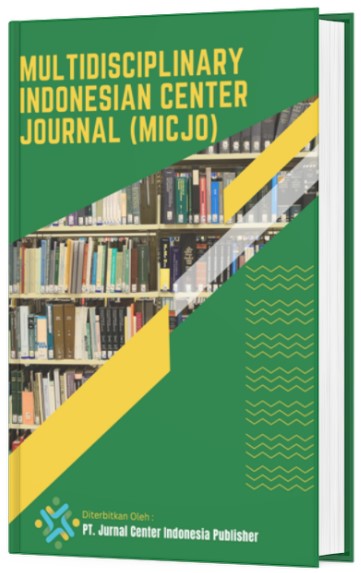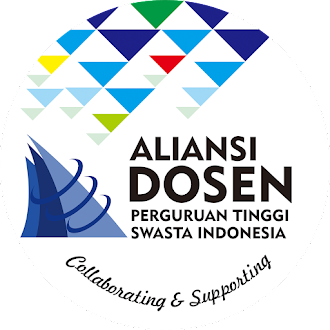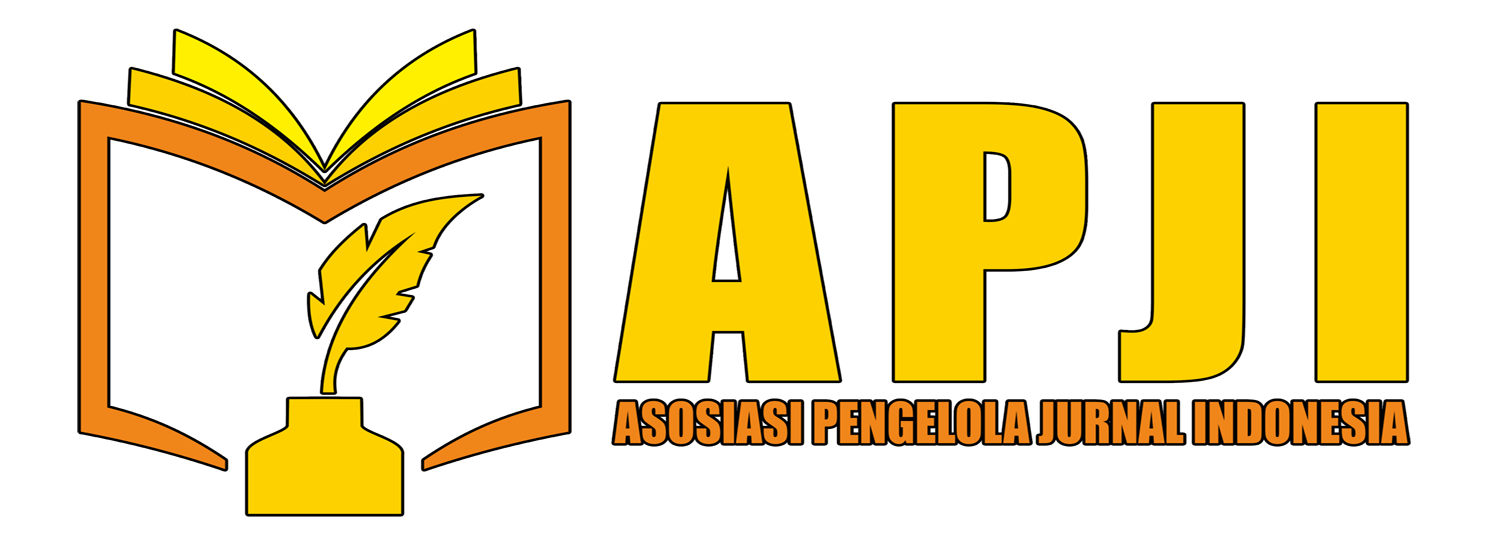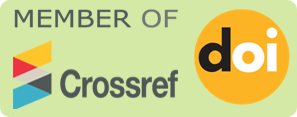DYNAMICS OF ARABIC LANGUAGE LEARNING IN THE GEN Z ERA: CHALLENGES AND OPPORTUNITIES
DOI:
https://doi.org/10.62567/micjo.v2i3.1182Keywords:
arabic, Generation Z, Educational Technology, challenges learning, opportonities innovationAbstract
Arabic in the Generation Z era faces significant learning changes along with the development of digital technology and the unique characteristics of this generation known as digital natives . This study aims to identify challenges and opportunities in the Arabic language learning process among Gen Z using a literature review approach to various recent studies. The research method uses a literature review by reviewing 30 articles in several published national journals. The results of the study indicate that the main challenges include low digital literacy among educators, limited technological infrastructure, and the dominance of traditional learning methods that are less attractive to Gen Z. However, on the other hand, there are great opportunities through the use of technology such as social media, interactive learning applications, gamification, and blended learning approaches that can increase motivation and learning participation. This study recommends the need for curriculum development that is adaptive to the needs of Gen Z, digital competency training for teachers, and the integration of digital media that is relevant to the learning styles of the younger generation. By utilizing existing opportunities, Arabic language learning can be more contextual, interesting, and effective for today's generation
Downloads
References
Astina, C., & Toyibah, T. (2021). Using the "Spelling Bee" Game Media to Improve Arabic Writing Skills. Lisanan Arabiya: Journal of Arabic Language Education , 4 (2), 233–255. https://doi.org/10.32699/liar.v4i2.1625
Azhari, A., & Hilmi, D. (2022). Use of YouTube in the Study of Arabic Language Learning among PGMI Students. EL-IBTIKAR: Journal of Arabic Language Education , 11 (1), 28. https://doi.org/10.24235/ibtikar.v11i1.9679
Basaris, MH (2021). The Use of YouTube in Intensive Arabic Language Learning at SMP Hikmah Padang Panjang. Lisaanuna Ta`lim Al-Lughah Al-Arabiyah: Journal of Arabic Language Education , 4 (2), 207–220. https://doi.org/10.15548/lisaanuna.v4i2.3273
Fauzia, EL, & Abdul Aziz, AU (2024). Improving Students' Mastery of Arabic Vocabulary and Comprehension of Texts through the Use of the Augmented Reality-Based Assemblr Edu Application. Tadris Al-'Arabiyyah: Journal of Arabic Language Education and Arabic Language , 3 (1), 135–149. https://doi.org/10.15575/ta.v3i1.34109
Fauzie, LB, Fathoni, A., & Firdaus, M. (2022). The Use of Picture Cards in Arabic Vocabulary Mastery: A Case Study at Mts Surya Buana. FASHOHAH: Scientific Journal of Arabic Language Education , 2 (1), 28–39. https://doi.org/10.33474/fsh.v2i1.15449
Fu'adah, S. (2021). Using Mind Mapping Strategies in Learning Arabic Vocabulary. Lahjah Arabiyah: Journal of Arabic Language and Arabic Language Education , 2 (1), 30–39. https://doi.org/10.35316/lahjah.v2i1.1014
Ghozali, DD (2021). Morpho-Semantic Analysis of the Use of Arabic Terms in the Instagram Social Network Dikri Dirwatul Ghozali1 1 Luthfia Khoiriyatunnisa 2. Kalamuna: Journal of Arabic Language Education and Arabic Language , 2 (1), 63–79.
Hasyim, A., & Syafei, I. (2024). Improving Listening and Speaking Skills in Arabic Language Learning Through the Use of Arabic Animation Videos. Mauriduna: Journal of Islamic Studies , 5 (2), 863–872. https://doi.org/10.37274/mauriduna.v5i2.1299
Linur, R., & Daulay, I. (2024). The Use of Google Classroom in Arabic Language Learning. AL-WARAQAH Journal of Arabic Language Education , 4 (2), 10–18. https://doi.org/10.30863/awrq.v4i2.5544
Ma'wa, N., Indriana, D., & Ubaidillah, U. (2024). The Effect of Using Flashcard Applications on Arabic Vocabulary Learning Outcomes. Al-Ittijah: Journal of Arabic Language Science and Education , 16 (1), 106–118. https://doi.org/10.32678/alittijah.v16i1.10320
Mahesti, A., & Jaya, A. (2024). Dynamics of Indonesian and Slang Use Among the Younger Generation. Parataksis: Journal of Language, Literature, and Indonesian Language Learning , 7 (2). https://doi.org/10.31851/parataksis.v7i2.16522
Muhamad Farhan Fauzan, Ihsan Abdul Aziz, Haunan Nisa, Salwa Shofiyyah, & Ahmad Fu'adin. (2023). Interpretation of Arabic Content: Students' Views on the Use of Arabic in the Digital Era. Perspective: Journal of Education and Language Studies , 2 (1), 01–11. https://doi.org/10.59059/perspektif.v2i1.862
Muhammad Haykal Rahman. (2022). USE OF WONDERSHARE QUIZ CREATOR AS A MEDIA FOR EVALUATION OF ARABIC LANGUAGE LEARNING IN MADRASAH IBTIDAIYAH. Al Waraqah , 3 (2), 50–58.
Muhammad Nasrullah. (2021). Use of Google Form Media in Evaluation of Arabic Language Learning (Multiple Choice). Naskhi Journal: Journal of Education and Arabic Language Studies , 3 (1), 30–40. https://doi.org/10.47435/naskhi.v3i1.553
Musthafa, I., & Safrudin, A. (2022). THE USE OF GOOGLE MEET AS AN ARABIC LANGUAGE LEARNING MEDIA AT MTS AL GHOZALI JATIBARANG. Tadris Al-'Arabiyyah: Journal of Arabic Language Education and Arabic Language , 1 (2), 227–238.
Nazrailman, A., Sopian, A., & Khalid, SM (2024). Learning Arabic on the Topic of 'Adad Ma'Dūd Through the Hybridization of YouTube and Quizizz in the Digital Native Generation. Al Mi'yar: Scientific Journal of Arabic Language Learning and Arabic Language , 7 (1), 249. https://doi.org/10.35931/am.v7i1.3370
Nur Aini, SM, Ikhwan, ZN, & Alfan, M. (2021). A Syntactic Contrastive Analysis of Gerund Use in English and Arabic. Lisanan Arabiya: Journal of Arabic Language Education , 5 (1), 1–12. https://doi.org/10.32699/liar.v5i1.1649
Oktavia, L., Saefuloh, H., & Wahyudin, W. (2023). The Effect of Using the Canva Application as a Learning Media in Improving Arabic Vocabulary Mastery. EL-IBTIKAR: Journal of Arabic Language Education , 12 (2), 189. https://doi.org/10.24235/ibtikar.v12i2.15238
Prihandini, A., & Fajriyatul Fahyuni, E. (2024). The Use of Flannel Board Media in Improving Student Learning Outcomes in Arabic Language Learning. Al Mi'yar: Scientific Journal of Arabic Language Learning and Arabic Language , 7 (2), 953. https://doi.org/10.35931/am.v7i2.3870
Rahmasari, H. (2021). Using YouTube as a Solution for Arabic Language Learning During the Pandemic. Maharaat: Journal of Arabic Language Education , 3 (1), 23–41. https://doi.org/10.18196/mht.v3i1.11362
Raodah, Miftahul Munif, AS (2021). THE USE OF ARABIC IN THE SPEECH ACTS OF HIJRAH ARTISTS ON SOCIAL MEDIA (AN IMPERATIVE SOCIOPRAGMATIC REVIEW). FASHOHAH: Scientific Journal of Arabic Language Education , 2 , 84–98. http://riset.unisma.ac.id/index.php/fashoh
Rustandi, E. (2024). PERCEPTIONS AND PROBLEMATICS OF USE OF THE ARABIC–INDONESIAN BILINGUAL DICTIONARY REVIEW OF PEDAGOGICAL LEXICOGRAPHY. Al Mi'yar: Scientific Journal of Arabic and Arabic Language Learning , 7 (1), 415–436.
Sri Winarti. (2024). Language Use Among the Young Generation in Banjarbaru City, South Kalimantan (p. 77).
Tengku Sinar Marwanda, SASN (2024). The Effect of Using an Arabic Thematic Dictionary in Improving Arabic Language Learning | Al-Tadris: Journal of Arabic Language Education . 646–672. https://ejournal.uinsatu.ac.id/index.php/tadris/article/view/10504/2781
Zebrillianti, D., & Muhammad Afifudin Dimyathi. (2024). The Use of the Puzzlemaker Application as an Evaluation Media for Arabic Vocabulary Learning. Muhadasah: Journal of Arabic Language Education , 6 (2), 202–216. https://doi.org/10.51339/muhad.v6i2.2893
Downloads
Published
How to Cite
Issue
Section
License
Copyright (c) 2025 Rocyhan Yasin

This work is licensed under a Creative Commons Attribution-ShareAlike 4.0 International License.


















